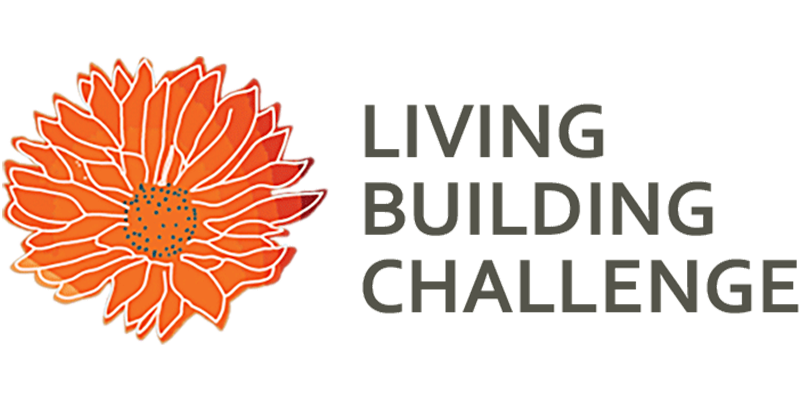1. What is the Living Building Challenge
The Living Building Challenge (LBC) is a U.S. and internationally recognized green building third-party certification program and sustainable design framework developed by the International Living Future Institute (ILFI). The Living Building Challenge goes beyond other green building certification programs, such as LEED, by aiming to create a net-positive impact on the environment and society.
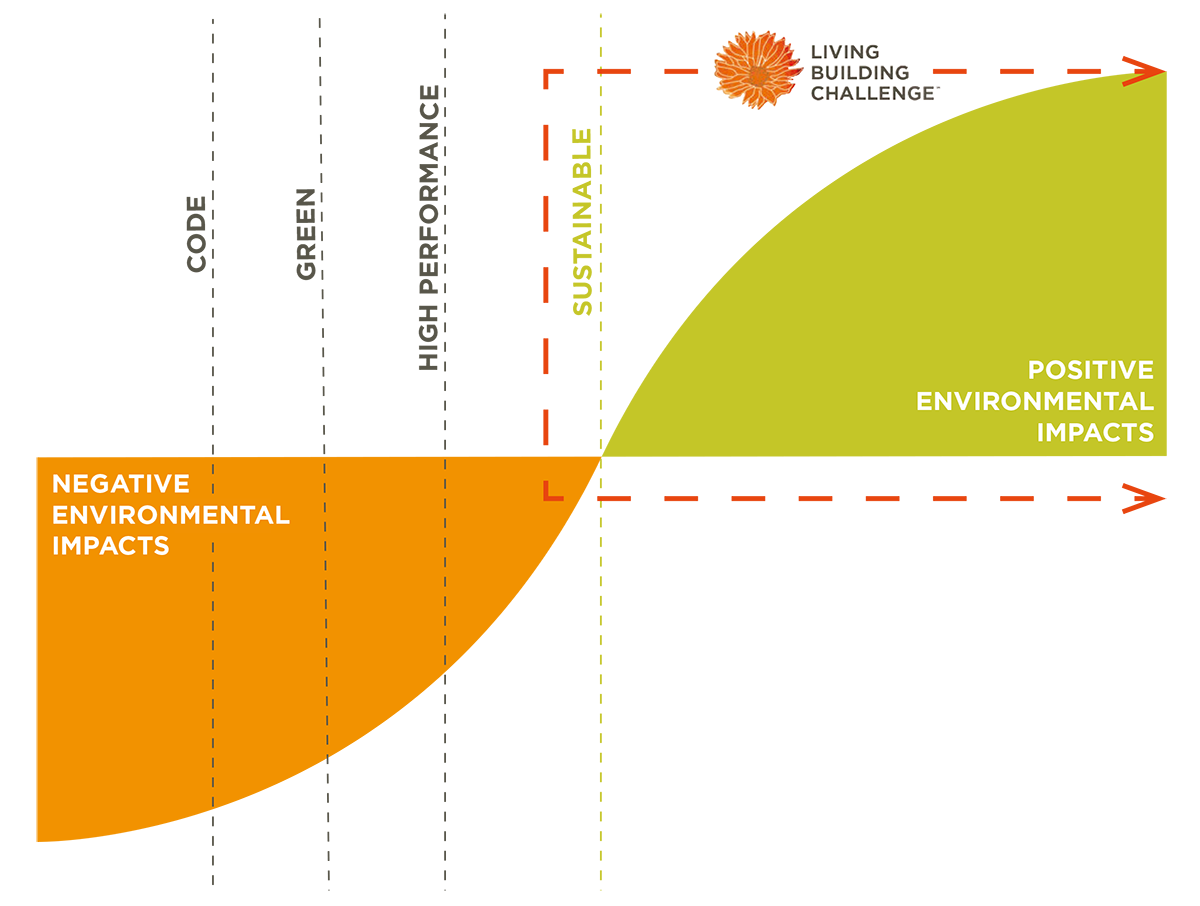
© International Living Future Institute. For more information, visitliving-future.org/lbc
The Living Building Challenge has seven performance categories, or Petals, that a building must meet to achieve certification: Place, Water, Energy, Health and Happiness, Materials, Equity and Beauty. Within each Petal, there are a number of Imperatives that must be met. For example, within the Energy Petal, buildings must be designed to produce more energy than they consume over the course of a year, while the Materials Petal requires the elimination of all toxic materials from the building. There are a total of 20 Imperatives.
The Living Building Challenge is based on actual rather than modeled or anticipated performance. To achieve Living Building Challenge certification, a building must meet all the Imperatives in each of the seven Petals for at least 12 consecutive months of operation and then be evaluated through a rigorous audit process to ensure compliance.
It addresses all buildings at all scales, whether the project is a single building, a renovation, an infrastructure project, or a park; the Living Building Challenge (LBC) provides a framework for the design, construction, and improvement of the symbiotic relationships between people and all aspects of the built and natural environment.
2. History and presence in the world
Since it was launched in 2006, the Living Building Challenge has inspired and motivated rapid and significant change: projects have sprouted up all over North America and beyond—currently, there are efforts underway in a dozen countries with hundreds of Living Building Challenge projects in progress. As of April 2019: 563 Registered Projects In 29 Countries.
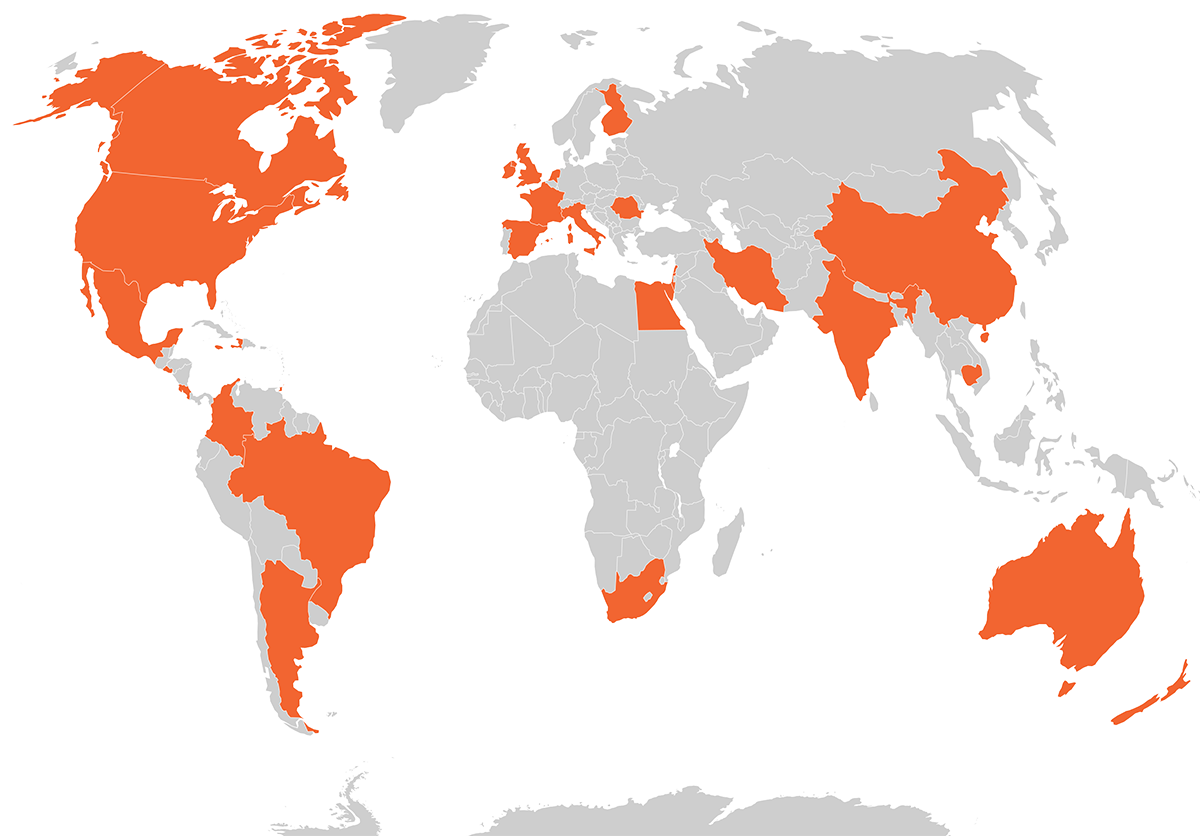
© International Living Future Institute. For more information, visitliving-future.org/lbc
Projects can be built in any climate zone anywhere in the world, as shown in this map highlighting countries where projects are certified.
Currently, no project has achieved this certification in Japan. Therefore, the first LBC project achievement is available for any entity willing to take up the challenge to show leadership in Japan.
3. Certification Options
LIVING CERTIFICATION
Living Certification is for projects striving for the highest level of sustainability and regenerative design. A project achieves Living Certification by attaining all Imperatives assigned to its Typology. All twenty Imperatives are required for New Buildings, and the other Typologies have similar but scope-dependent requirements.
PETAL CERTIFICATION
Petal Certification is for projects that want to dive deeply into one particular issue area, or Petal of the Living Building Challenge. This certification requires the achievement of all the Core Imperatives, in addition to all Imperatives in either the Water, Energy, or Materials Petal.
4. Other International Living Future Institute certifications
CORE GREEN BUILDING CERTIFICATION
Core Green Building Certification (Core Certification) is for projects seeking a high aspiration certification that is verified, holistic, and readily achievable. Projects must meet the requirements of the ten Core Imperatives – up to two Core Imperatives per Petal – and verify performance for water and energy through a twelve-month performance period. All Imperatives required for this certification are described in the Standard, and are consolidated into the Core Green Building Certification Standard.
ZERO ENERGY CERTIFICATION
Zero Energy (ZE) Certification is for projects focused on achieving net zero energy through the on-site production of renewable energy. The marketplace has characterized net zero energy in many different ways, but ILFI has a simple definition: One hundred percent of the building’s energy needs on a net annual basis must be supplied by on-site renewable energy, with no combustion.
ZERO CARBON CERTIFICATION
Zero Carbon (ZC) Certification is for projects focused on impacting climate change through energy and materials. This certification requires that one hundred percent of the operational energy use associated with the project be offset by new on- or off-site renewable energy. It also requires a targeted energy efficiency level and a reduction in the embodied carbon of the project’s primary materials. In addition, one hundred percent of the carbon emissions impacts associated with the construction and materials of the project must be disclosed and offset.
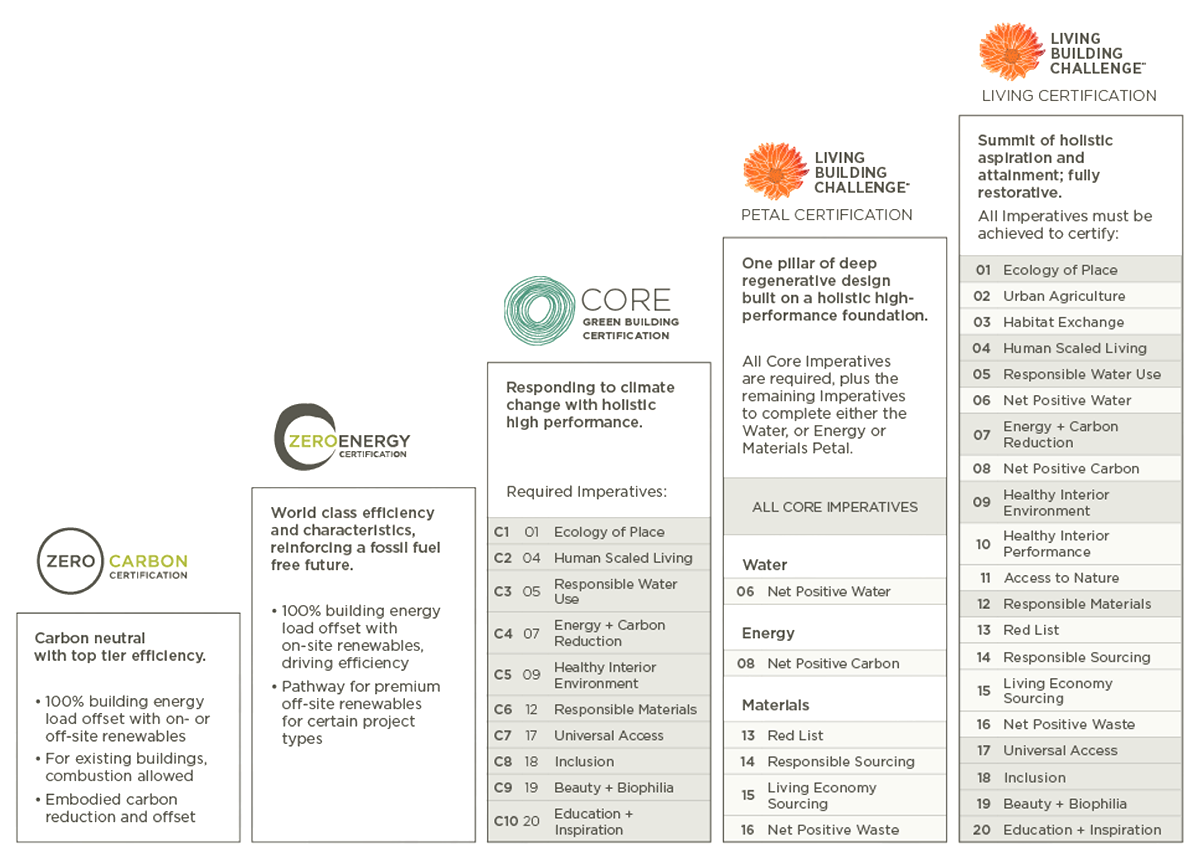
© International Living Future Institute. For more information, visit living-future.org/lbc
5. Structure and applicability
The Living Building Challenge is versatile and can apply to any building project. These include but are not limited to new construction, existing buildings, interior projects, single-family residential, multi-family residential, commercial, institutional, or medical & laboratory
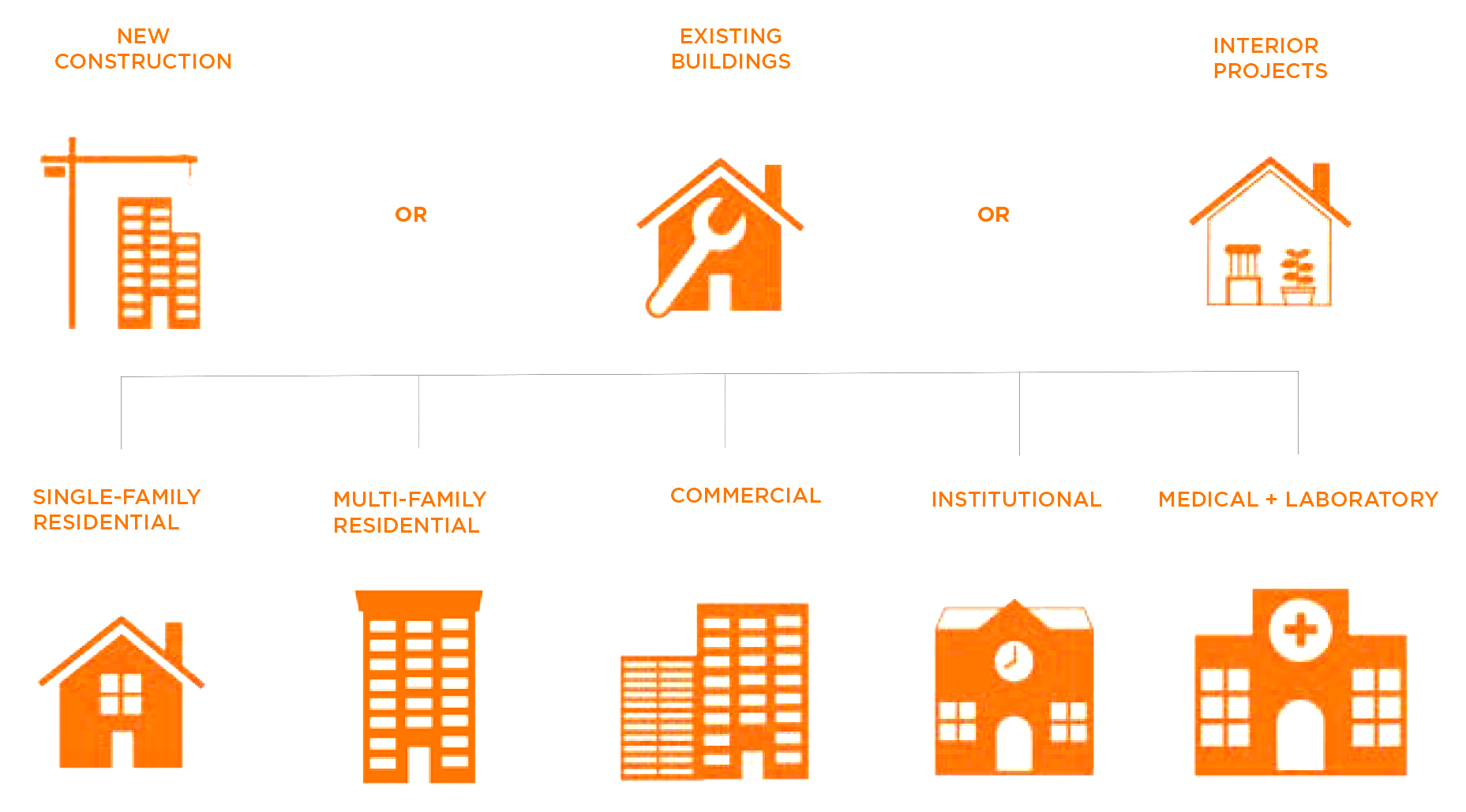
© International Living Future Institute. For more information, visit living-future.org/lbc
Living Building Challenge projects come in all shapes and sizes and consist of new construction and renovation projects—including historic preservation. Requirements can vary based on project context and conditions, but the intent of the Imperatives remains the same, regardless of project type.
Typology
NEW BUILDING: This Typology is for any project that encompasses the construction of a new building.
EXISTING BUILDING:
This Typology is for any project that alters either the envelope or the major systems of a building.
INTERIOR:
This Typology is for any project that does not alter the envelope and/or the major systems of a building.
LANDSCAPE OR INFRASTRUCTURE:
This typology is for any project that does not include an enclosed structure as part of its primary program. Projects may be parks, roads, bridges, plazas, sports facilities, or trails.
Some Imperatives are not required for all Typologies
6. Fees
Fee payment occurs in three phases:
25% at Registration,
50% before Construction,
and 25% prior to the preliminary Ready Audit.
|
Project Size |
ZE&ZC |
Core |
LBC (Petal & Living) |
||||
|---|---|---|---|---|---|---|---|
|
Single Family Res. |
$3,000 |
$4,500 |
$6,000 |
||||
|
Square Meter Range |
$/Sq M |
Minimum |
$/Sq M |
Minimum |
$/Sq M |
Minimum |
|
|
0 |
6,967 |
$0.700 |
$3,750 |
$1.399 |
$7,000 |
$2.045 |
$10,000 |
|
6,968 |
23,225 |
$0.592 |
$4,750 |
$1.076 |
$9,750 |
$1.615 |
$14,250 |
|
23,226 |
46,451 |
$0.431 |
$13,750 |
$0.861 |
$25,000 |
$1.345 |
$37,500 |
|
46,452 |
69,677 |
$0.377 |
$20,000 |
$0.753 |
$40,000 |
$1.184 |
$62,500 |
|
69,678 |
and above |
Request a quote |
Request a quote |
Request a quote |
|||
Note: All listed fees are in United States Dollars. The fee structure shown is as current as of March 2023. More details are available https://living-future.org/projectregistration
Note: ILFI does not endorse the LBC summary which is the sole creation of Woonerf. For more information about the LBC Standard, please visit living-future.org/lbc

 Page Top
Page Top